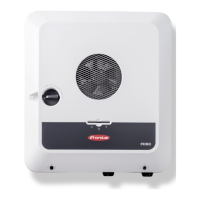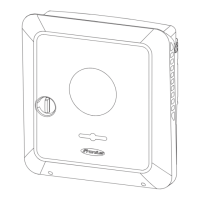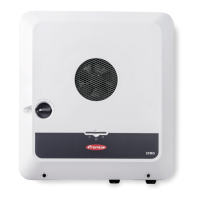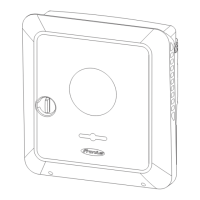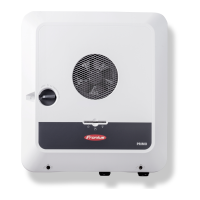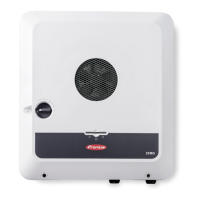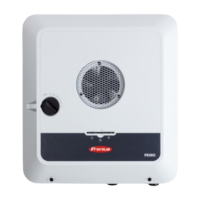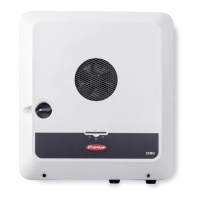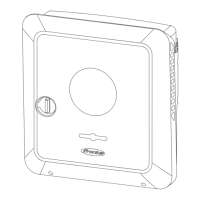Safety and grid requirements
Feed-in limitation DNO or grid operators may stipulate feed-in limitations for an inverter (e.g. max. 70% of
kWp or max. 5 kW).
The feed-in limitation takes account of self-consumption by the household before the
power of an inverter is reduced:
- A custom limit can be set.
- A Fronius Smart Meter can be connected to the Modbus push-in terminal of the data
communication area at the connections M0/M1- / M0/M1+ for Modbus data.
With the inverter, any PV power that is not allowed to be fed into the grid is used to
charge the battery instead and/or used by the Fronius Ohmpilot so that it does not go to
waste. The feed-in limitation is only active if the power fed in is higher than the set power
reduction. The battery is charged first or the energy is consumed on the Fronius Ohmpi-
lot.
"Limit for entire system"
The entire PV system is limited in accordance with a set power limit. If this setting is dis-
abled, the entire available PV‑power is converted and fed into the grid.
"Total DC system power"
Input field for the total DC system power in Wp.
This value is used if the "Maximum permitted feed-in power of the entire system" is spe-
cified in %.
"Maximum permitted feed-in power of the entire system"
Input field for the "Maximum permitted feed-in power of the entire system" in W or %
(setting range: -10 to 100%).
If there is no meter in the system or if a meter has failed, the inverter limits the feed-in
power to the set value.
Example: Feed-in limitation
(without consideration of the efficiency)
PV system on Fronius inverter: 5000 W
Consumption in home: 1000 W
Maximum permitted feed-in power of the entire system: 60% = 3000 W
Case 1: The battery can be charged
Power at grid feed-in point: 0 W
Power at inverter output: 1000 W
Power into the battery: 3000 W
Case 2: The battery cannot be charged
Power at grid feed-in point 3000 W
Power at inverter output: 4000 W
Power into the battery: 0 W
105
EN
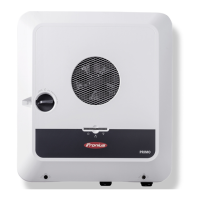
